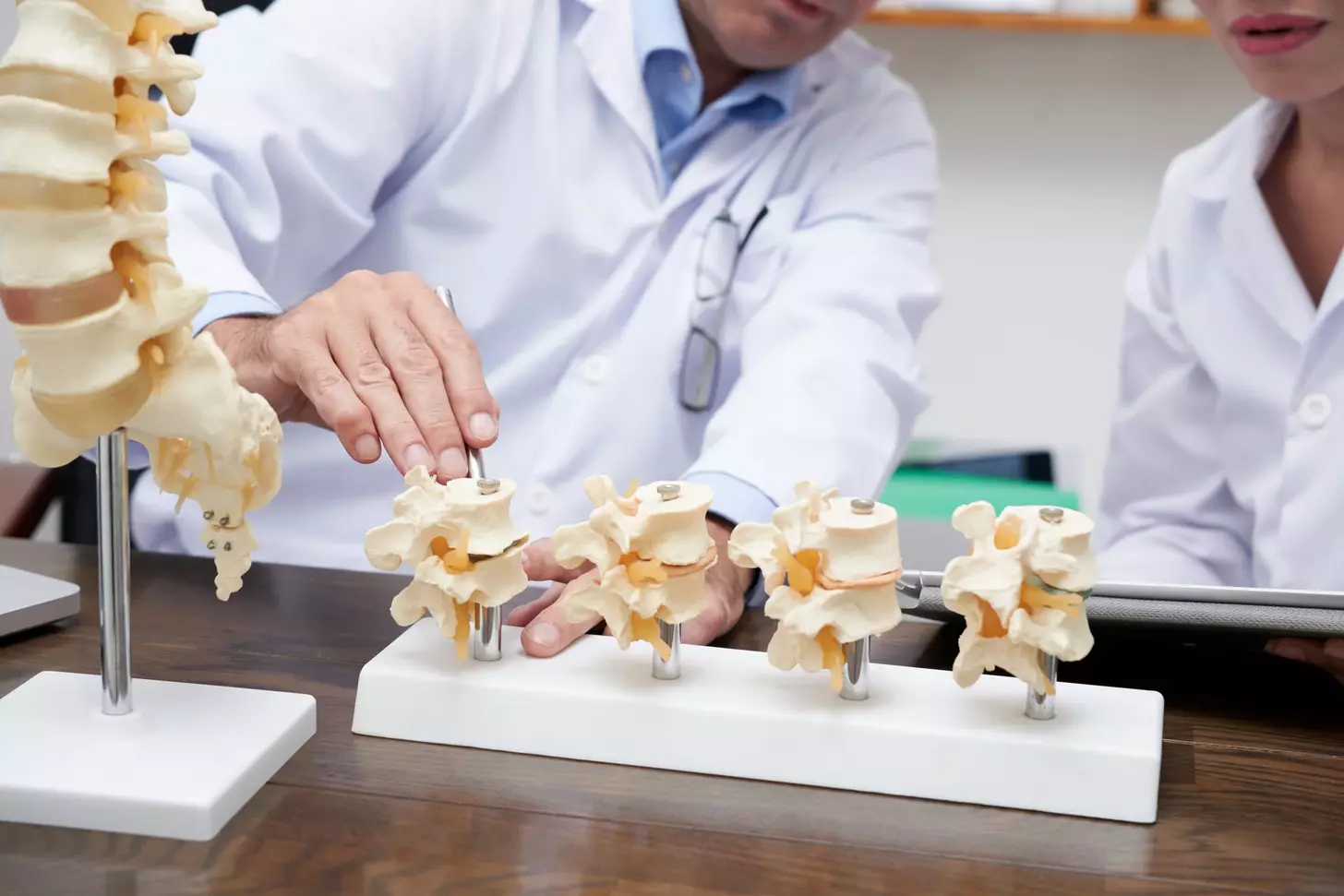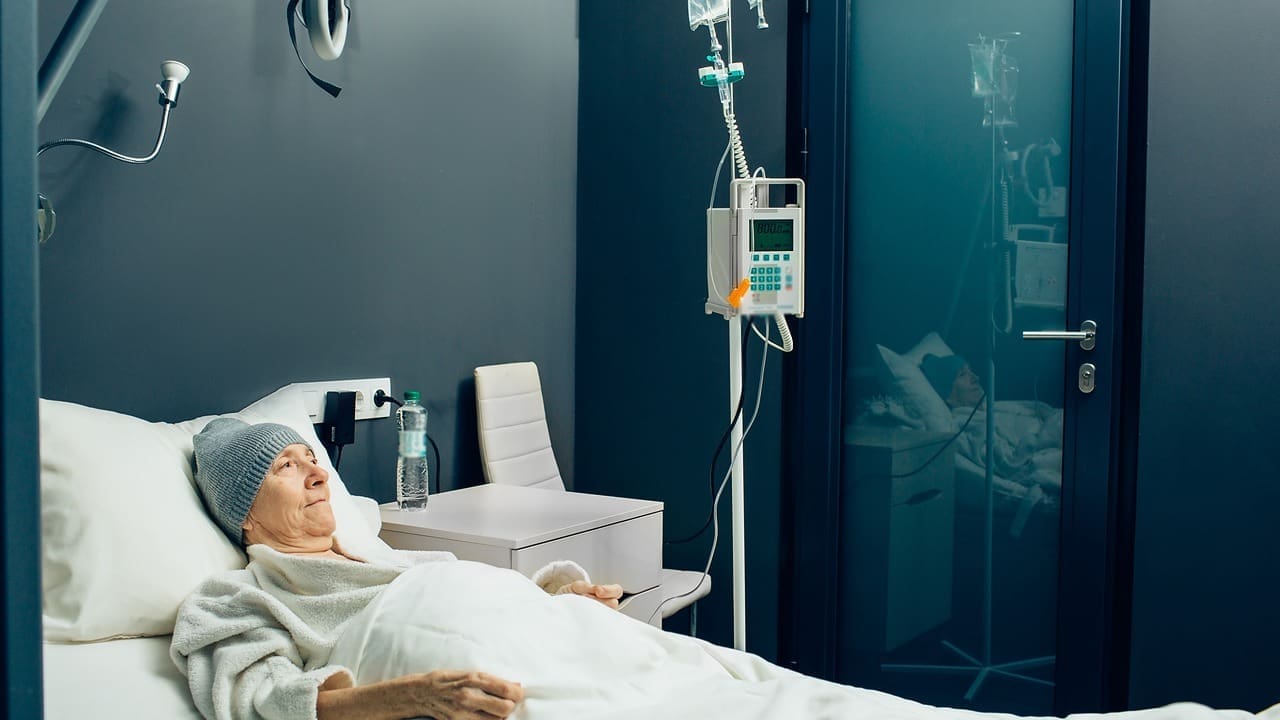Last Updated on November 26, 2025 by Bilal Hasdemir

Cardiac ablation for atrial fibrillation is a procedure to fix irregular heartbeats. It destroys small heart tissue parts that send out wrong signals.
This method, called catheter ablation, makes scars to block bad signals. Doctors use heart ablation for atrial fibrillation when meds don’t work. says it aims to fix the heart rhythm and better life quality.
Key Takeaways
- Cardiac ablation is a minimally invasive procedure to treat irregular heart rhythms.
- The procedure uses catheter-based or surgical techniques to destroy abnormal electrical pathways.
- It is considered one of the most effective atrial fibrillation treatment ablation options.
- The goal is to restore a normal heart rhythm and improve quality of life.
- Patients can make informed decisions by understanding the procedure and its outcomes.
Understanding Atrial Fibrillation and Its Impact on Heart Health

Atrial fibrillation (AFib) is a common heart rhythm disorder. It affects the heart’s upper chambers, causing irregular heartbeats. This can lead to symptoms and serious complications if not treated.
What Happens During Atrial Fibrillation
In atrial fibrillation, the heart’s upper chambers beat irregularly. This means they don’t pump blood well into the ventricles. Symptoms include palpitations, shortness of breath, and fatigue.
The heart’s electrical activity becomes chaotic. This can make the heart beat too fast, too slow, or irregularly.
Key effects of AFib on the heart include:
- Reduced cardiac output due to inefficient pumping
- Increased risk of thrombus formation and stroke
- Potential for heart failure if left untreated
Symptoms and Complications of Untreated AFib
Untreated atrial fibrillation can cause many symptoms and complications. Common symptoms are:
- Palpitations or irregular heartbeat
- Shortness of breath
- Fatigue or weakness
- Dizziness or lightheadedness
If not treated, AFib can lead to serious complications. These include:
“Atrial fibrillation is a major risk factor for stroke, and anticoagulation therapy is often necessary to prevent thromboembolic events.” –
American Heart Association
The Burden of Atrial Fibrillation in the United States
Atrial fibrillation is a big public health issue in the United States. It affects millions of Americans. The number of people with AFib is expected to grow as the population ages.
| Year | Prevalence of AFib in the US | Projected Prevalence |
| 2020 | 5 million | 6 million |
| 2030 | – | 12 million |
The cost of treating AFib is high. It includes healthcare costs for managing the condition and its complications.
Cardiac Ablation for Atrial Fibrillation: Definition and Purpose

The cardiac ablation procedure aims to stop the abnormal electrical pathways in the heart that cause atrial fibrillation. It is a key treatment for AFib patients, aiming to cure or greatly improve symptoms.
How Cardiac Ablation Works
Cardiac ablation uses energy like radiofrequency or cryoablation to destroy the heart tissue, causing irregular rhythms. Doctors insert catheters through a leg vein and guide them to the heart. There, they use energy to destroy the problem areas.
Key aspects of the cardiac ablation process include:
- Mapping the heart’s electrical pathways to find the arrhythmia source
- Using energy to ablate (destroy) the problematic tissue
- Monitoring the heart’s rhythm in real-time during the procedure
The Science Behind Targeting Abnormal Heart Tissue
The success of cardiac ablation relies on finding and targeting the abnormal electrical pathways. Advanced mapping technologies help doctors pinpoint the exact locations causing the arrhythmia. This ensures the energy is delivered precisely.
The science behind cardiac ablation involves understanding the heart’s electrical system and its link to atrial fibrillation. By focusing on the specific areas causing irregular heartbeat, the goal is to bring back a normal rhythm.
Goals of Ablation Treatment
The main goals of cardiac ablation for atrial fibrillation are to lessen symptoms, enhance quality of life, and possibly avoid long-term medication. The procedure can greatly improve patients’ well-being by making their heart rhythm more normal.
| Goals | Description |
| Reduce Symptoms | Lessen palpitations, shortness of breath, and fatigue linked to AFib |
| Improve Quality of Life | Allow patients to do daily activities without AFib symptoms |
| Minimize Medication | Potentially reduce or eliminate the need for anti-arrhythmic drugs |
By reaching these goals, cardiac ablation can significantly improve patients’ lives and heart health.
Types of Cardiac Ablation Procedures
There are many ways to treat atrial fibrillation with cardiac ablation. These include using heat, cold, and surgery. The right procedure depends on the patient’s health, how bad their atrial fibrillation is, and the doctor’s skills.
Radiofrequency Ablation
Radiofrequency ablation is a common treatment for atrial fibrillation. It uses high-frequency energy to make lesions in the heart. This stops the abnormal electrical signals that cause the arrhythmia. A catheter guides the energy to the heart through blood vessels.
“Radiofrequency ablation has become a cornerstone in the treatment of atrial fibrillation,” recent medical literature says. It’s proven to restore a normal heart rhythm.
Cryoablation Techniques
Cryoablation, or cryotherapy, is another good method for treating atrial fibrillation. It freezes the abnormal heart tissue with extreme cold. This method is chosen for its gentle effect on the surrounding heart tissue.
Surgical Ablation Options
Surgical ablation is a more invasive method. It involves opening the chest to directly access the heart. Surgeons can then make lesions on the heart surface. This is often used for patients having other heart surgeries.
The Cox-Maze procedure is a surgical technique that’s very effective against atrial fibrillation. The choice of procedure depends on the patient’s condition, the doctor’s expertise, and personal preferences. Knowing about these options helps patients make better choices for their treatment.
Who Is a Good Candidate for Cardiac Ablation?
Not everyone with atrial fibrillation can get cardiac ablation. It’s a treatment that aims to fix the heart’s electrical problems. These problems cause the arrhythmia.
Medical Criteria for Ablation Eligibility
To get cardiac ablation, you need symptomatic atrial fibrillation that other treatments can’t fix. Doctors look at how bad your symptoms are and your heart health. They also check your overall health.
The American Heart Association says patients who can’t handle medication might getan an ablation. “Cardiac ablation is a good choice for patients with atrial fibrillation symptoms who can’t take antiarrhythmic drugs.”
When Medication Management Fails
Medicine is usually the first treatment for atrial fibrillation. But if it doesn’t work or causes bad side effects, ablation might be next. If medicine doesn’t help, you might be a candidate for ablation.
“For patients with atrial fibrillation who are symptomatic despite medical therapy, catheter ablation can be an effective treatment strategy.”
Factors That May Disqualify Patients
Even though ablation can help with atrial fibrillation, some people can’t have it. This includes older patients, those with serious health issues, and those with certain medical problems.
- Advanced heart failure
- Significant kidney disease
- Other serious medical conditions that increase procedural risk
Choosing to do cardiac ablation depends on each patient’s situation. Doctors consider the patient’s health history, current health, and the risks and benefits of the procedure.
The Cardiac Ablation Procedure: What to Expect
Knowing about the cardiac ablation procedure is key for patients. It helps them feel ready and informed about treating atrial fibrillation. This complex process is designed to be safe and effective, with important steps for patients to know.
Pre-Procedure Preparation
Before the procedure, patients go through several steps. They stop certain medications that could affect the procedure. This includes blood thinners. They also prepare their body for the ablation.
Patients are usually told to:
- Stop taking certain medications as directed by your doctor
- Arrange for someone to drive them home after the procedure
- Plan for a few days of rest following the treatment
Step-by-Step Process During the Procedure
During the procedure, patients are given sedation to relax. An electrophysiologist inserts catheters through a leg vein and guides them to the heart. The catheters then deliver energy to the heart tissue, causing the abnormal rhythms.
The procedure’s complexity varies based on the patient’s condition and type of atrial fibrillation. Advanced mapping technologies help target the specific areas to be ablated.
Role of Electrophysiology Studies
Electrophysiology studies are vital in the cardiac ablation procedure. These studies use catheters to record the heart’s electrical activity. They help identify the sources of abnormal rhythms, guiding the ablation process.
“The integration of electrophysiology studies into the cardiac ablation procedure has significantly improved the success rates of this treatment, allowing for more precise targeting of abnormal heart tissue.”
Duration and Anesthesia Considerations
The cardiac ablation procedure can last between 3 to 6 hours. Anesthesia options vary, with some procedures under general anesthesia and others using conscious sedation. The choice depends on the patient’s health, procedure complexity, and the doctor’s preference.
Patients should talk to their doctor about anesthesia options. This helps them understand what to expect and address any concerns.
Success Rates and Effectiveness of Ablation for AFib
It’s important to know how well cardiac ablation works for atrial fibrillation. The success of this treatment can vary. It depends on the type of AFib and if more than one procedure is needed.
Success Rates for Different Types of Atrial Fibrillation
Cardiac ablation’s success rate changes based on the type of AFib. People with paroxysmal AFib tend to do better than those with persistent AFib.
Paroxysmal AFib: For paroxysmal AFib, one ablation can work for 50% to 70% of patients. Doing it again can boost success to over 80%.
Persistent AFib: Persistent AFib has a lower success rate, from 40% to 60% after one try. Doing it more than once can help, but it’s not as effective as for paroxysmal AFib.
Single vs. Multiple Procedure Outcomes
Whether you need one or more ablations can affect how well it works. Research shows that while one procedure can help, some might need more to feel better.
- For paroxysmal AFib, one procedure often works well, reducing symptoms a lot.
- Those with persistent AFib might need more procedures to see good results.
Long-Term Effectiveness Data
It’s key to know how long cardiac ablation works for AFib. Studies show it can last for years, mainly for paroxysmal AFib.
| Type of AFib | Success Rate After Single Procedure | Success Rate After Multiple Procedures |
| Paroxysmal AFib | 50-70% | 80-90% |
| Persistent AFib | 40-60% | 60-80% |
The table shows how well cardiac ablation works for different AFib types. It shows that more procedures can lead to better results.
Safety Profile and Potential Risks of Cardiac Ablation
It’s important to know the risks and complications of cardiac ablation. This procedure is usually safe, but there are risks to be aware of.
Common Side Effects and Complications
Side effects and complications include bleeding, infection, and cardiac tamponade. These can happen during or after the procedure. Bleeding is a risk because of the anticoagulant meds and the invasive nature. Infection can happen, and cardiac tamponade is a serious condition where fluid builds up around the heart.
Serious but Rare Complications
But there are rare but serious complications like stroke, pulmonary vein stenosis, and death. These are rare but can have big effects. Stroke can happen from blood clots during the procedure. Pulmonary vein stenosis occurs when the pulmonary veins narrow, causing heart problems.
Mortality Rates Associated with the Procedure
The death risk from cardiac ablation is low, but it depends on several factors. These include the patient’s health, the doctor’s skill, and the technique used. Most studies show the death risk is less than 1%.
Risk Factors That Increase Complication Rates
Some risk factors can make complications more likely. These include being older, having other heart diseases, and health issues like diabetes or kidney disease. Knowing these risk factors helps in making informed decisions about the procedure.
Recovery and Post-Procedure Care
The recovery after cardiac ablation is key. It needs careful attention and care. Knowing what to expect can help the treatment succeed and improve your health.
Immediate Post-Procedure Experience
After the procedure, you’ll go to a recovery area. Here, you’ll be watched for a few hours. You might feel sore or uncomfortable where the catheter was.
Rest is very important at this time. It helps your body start healing.
Timeline for Recovery
Recovery times vary, but most get back to normal in a few days to a week. It’s key to follow your doctor’s advice for a smooth recovery.
Medication Management After Ablation
Managing your meds is a big part of care after. You might take pain meds, blood clot preventers, or heart rhythm controllers. Sticking to your meds is very important to avoid problems and make sure the ablation works.
Follow-Up Care and Monitoring
Follow-up care is vital. You’ll see your doctor regularly to check on you and talk about any issues. Regular checks help catch problems early, so they can be fixed quickly.
| Aspect of Care | Description | Importance |
| Rest | Avoid strenuous activities and get plenty of rest. | Allows the body to heal and reduces the risk of complications. |
| Medication Adherence | Taking prescribed medications as directed. | Crucial for managing symptoms and preventing complications. |
| Follow-Up Appointments | Attending scheduled appointments with healthcare providers. | Essential for monitoring progress and addressing concerns. |
Alternatives to Cardiac Ablation for Managing Atrial Fibrillation
Cardiac ablation is a common treatment for atrial fibrillation. But some people might choose or need other ways to manage their condition. These options can help control symptoms and improve life quality.
Medication-Based Approaches
Medicines are often the first choice for treating atrial fibrillation. They include:
- Anti-arrhythmic drugs to control the heart rhythm
- Beta-blockers and calcium channel blockers to manage heart rate
- Anticoagulants to prevent stroke
These medicines can help manage symptoms. But, they might have side effects and aren’t right for everyone.
Lifestyle Modifications
Making lifestyle changes can greatly help manage atrial fibrillation. Recommended changes include:
- Dietary changes: Cut down on caffeine and alcohol, eat more fruits, vegetables, and whole grains
- Exercise regularly: Do moderate exercise to keep your heart healthy
- Stress management: Try stress-reducing activities like meditation or yoga
The American Heart Association says, “Lifestyle changes can help reduce AFib episodes.”
“Lifestyle changes can help reduce the frequency and severity of AFib episodes.” – American Heart Association
Other Procedural Options
For some, other procedures might be considered. These include:
| Procedure | Description | Benefits |
| Cardioversion | A procedure that uses electrical shocks to restore a normal heart rhythm | Quick restoration of normal heart rhythm |
| Pacemaker implantation | Implanting a device that helps control the heartbeat | Effective in managing heart rate and rhythm |
These options offer different benefits and can be chosen based on individual needs for atrial fibrillation.
Conclusion: Making an Informed Decision About Cardiac Ablation
Patients with atrial fibrillation face many treatment options. Cardiac ablation is a promising atrial fibrillation treatment method. It offers a chance for a cure for many people.
Knowing the good and bad sides of cardiac ablation helps patients make smart choices. They should think about how well the procedure works, possible problems, and other treatment options. This includes medicines and changes in lifestyle.
Choosing cardiac ablation wisely needs teamwork between patients and doctors. Together, they can create a treatment plan that fits the person’s needs. This plan can greatly improve their quality.
FAQ
What is cardiac ablation for atrial fibrillation?
Cardiac ablation is a procedure to fix irregular heart rhythms. It destroys the bad electrical pathways in the heart.
How does cardiac ablation work?
It uses energy to remove the problem tissue in the heart. This helps the heart beat normally again.
What are the different types of cardiac ablation procedures?
There are several types. These include radiofrequency ablation, cryoablation, and surgical ablation.
Who is a good candidate for cardiac ablation?
People who have tried medicines and failed, or have certain health issues, might be good candidates.
What are the risks and complications associated with cardiac ablation?
Cardiac ablation is mostly safe. But, there are risks like side effects, rare serious problems, and death.
What is the success rate of cardiac ablation for atrial fibrillation?
Success rates vary. It depends on the type of AFib and how many times the procedure is done.
What can I expect during the cardiac ablation procedure?
The procedure includes getting ready, the actual ablation, and care after. It’s a step-by-step process.
How long does it take to recover from cardiac ablation?
Recovery time varies. But most people get better in a few days to weeks.
Are there alternative treatment options for managing atrial fibrillation?
Yes, there are other ways to manage AFib. These include medicines, lifestyle changes, and other procedures.
Can cardiac ablation cure atrial fibrillation?
Cardiac ablation can be very effective. But,t might not work for everyone.
What is the role of electrophysiology studies in cardiac ablation?
Electrophysiology studies are key. They help find the heart areas causing the arrhythmia.
What are the benefits of cardiac ablation for atrial fibrillation?
The benefits include a normal heart rhythm, better quality of life, and lower stroke risk.
References
- Lippi, G., Sanchis-Gomar, F., & Cervellin, G. (2021). Global epidemiology of atrial fibrillation: An increasing epidemic and public health challenge. International Journal of Stroke, 16(2), 217–221. https://www.ncbi.nlm.nih.gov/pmc/articles/PMC7954313/






